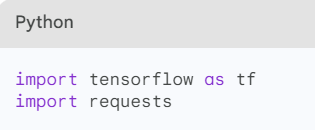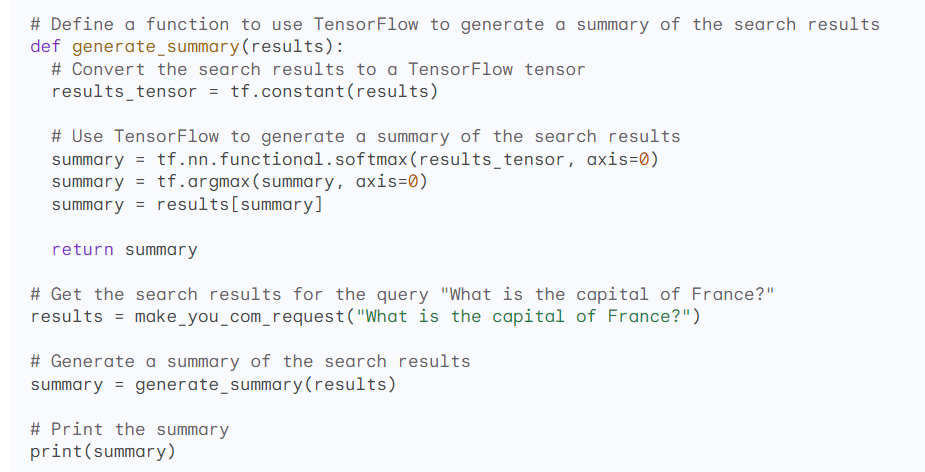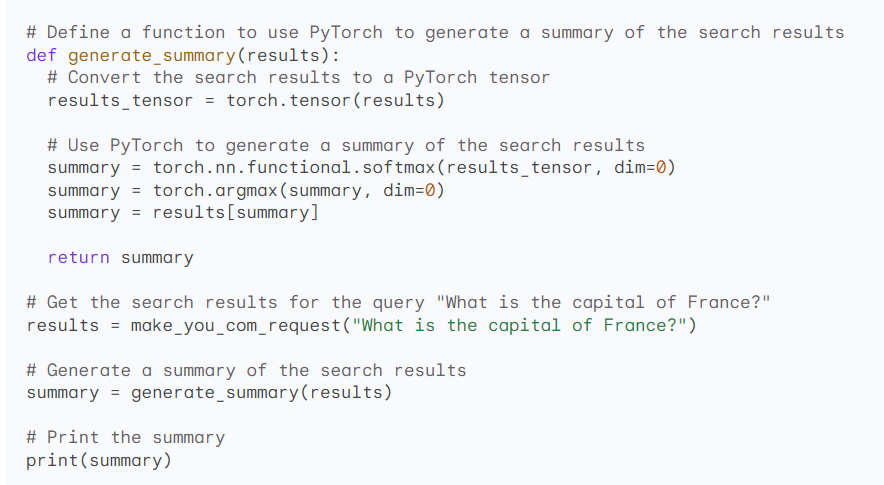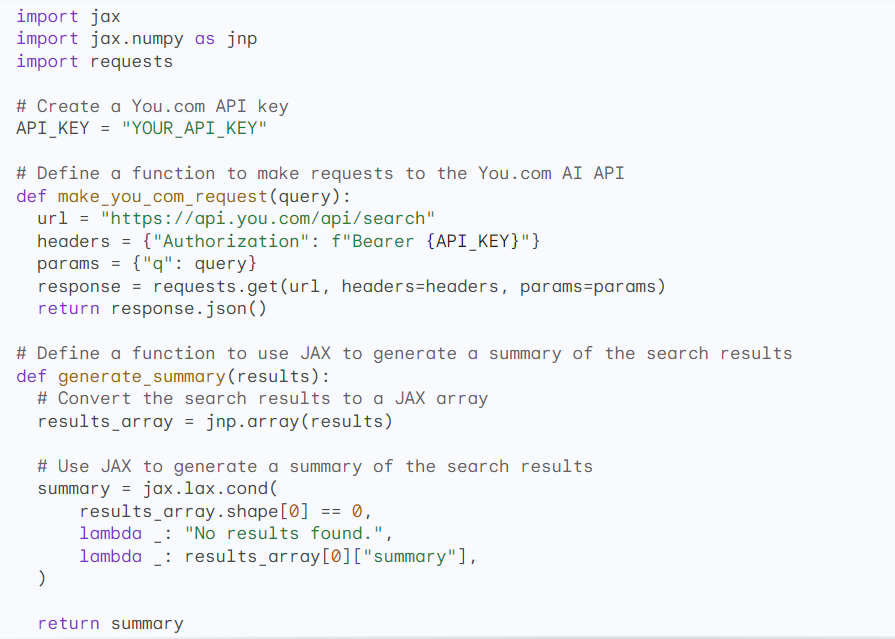YOU.COM
Short description: You.com is a search engine AI that allows users to personalize their experience. Users can now customize or search through their results, upvote or downvote various applications or even block them. You.com AI provides services like YouChat chatbot, the YouWrite tool for writing and YouImagine, the AI-image generator tool and YouCode, for creating code.
Description:
You.com is a website under development used for personalized search results, launched on 9 November 2021, by Richard Socher and Bryan McCan. You.com gets its results from Microsoft Bing. You.com offers a large variety of unique features like privacy, answering questions, generating text, translating languages, or creating images based on text descriptions. Users have the possibility to create their own AI characters by choosing from various parameters such as name, gender, age, appearance, personality, interests and others. Users can communicate with their AI characters via text or voice chat, and can also see their animated images. Users can also share their AI characters with other users and communicate with their AI characters.
Architecture: 3.1.
Architecture description: You.com consists of three main components: a web interface, a backend, and an AI module.
Web interface: it is a web page where users can create, edit and manage their AI characters and communicate with them and other users. The web interface has different elements such as character creation form, settings panel, chat window and others.
Backend: this is the server side that handles user requests and returns responses from the AI characters. The backend uses a database to store information about users and their AI characters, as well as APIs for integration with different services and platforms.
AI module: this is the part that is responsible for generating text and speech for the AI characters, as well as animating their images. The AI module uses different machine learning models to perform different tasks such as text generation, speech synthesis, speech recognition, emotion recognition, image generation and others.
Key Technical Features
You can find You.com’s official technical documentation by clicking right here:
Model Technologies:
Large Language Models (LLMs): You.com AI uses LLMs to understand and learn the prompts created by the users and offer the relevant search results. LLMs are trained on massive amounts of data, from text and code and can perform complex tasks like analyzing or extracting data from large documents, translation to any language or answering questions.
Neural networks: You.com uses neural networks for operations consisting of ranking search results and generating AI content. Neural networks are machine learning algorithms that can be used for various tasks such as learning and filtering the output results.
Reinforcement learning: This is a technology used to help AI systems perform tasks in a way that maximizes rewards and learn from their own experience based on their interactions with users. Reinforcement learning is used to train the AIs, allowing agents to develop and improve their future content.
Example of a step-by-step You.com architecture:
- The user opens a You.com webpage and types something in the search tab (called search query)
- The LLMs reads the query from the user and tries to understand it and collect relevant data to display
- You.com’s AI systems ranks the search results based on user’s search history, relevance of the content and the quality of the results, based on the latest sources from the Internet
- You.com displays the customized generated AI content
Software Architecture
You.com AI is developed in Python because it’s easier to learn and use. Besides the fact that it is an amazing tool for web development, it is also used for operations related to data science and machine learning. Plus, it's easier to integrate other third parties applications.
For the back-end side, You.com used Java, known for its portability and reliability. Java is an excellent programming language for enterprise software development, mobile app development and big data processing.
For performance and other operations, You.com also uses C++, JavaScript or Go for microservices.
Accessing the API
In order to use the API provided by You.com, you will have to ask for permission first. To do this, just send an email to this email developer@you.com and wait for the API KEY approval.
After you receive the API key, you can start using it. In order to do that, you need to include your key in the header of the requests to You.com API. The following is an example of a request you can use:
GET /api/search?q=hello+world HTTP/1.1
Host: api.you.com
Authorization: Bearer YOUR_API_KEY
For more information you can continue using the link documentation.
Frameworks:
TensorFlow: TensorFlow is the most popular open-source framework for building and training machine learning models, developed by Google Brain team. You.com AI also uses the OpenAI which is implemented in TensorFlow, offering a great set of tools and resources from high-level APIs for building the models, to low-level APIs for customizing them and a large library of pre-trained models for common tasks. TensorFlow is used in various tasks such as image recognition, natural language processing (NLP) and machine translation.
Example of code snippet integrating TensorFlow with You.com AI:

The first two lines of code are the TensorFlow libraries that need to be imported in our code. The request library is used for making HTTP type requests.

The code example shows a way to integrate TensorFlow with You.com displaying a result of a summary of the search results for the prompt “What is the capital of France?”. After creating and receiving the API key from You.com, a function call will be triggered make_you_com_request() taking the search query as input and returning the JSON response.
The generate_summary() function takes the result in a JSON format as a parameter and converts it to a TensorFlow code. The output console will generate the summary of the search results, displaying “Paris”.
PyTorch: Pytorch open-source machine learning framework library developed by Meta AI and now part of Linux Foundation based on Torch library. PyTorch has a C++ interface and it’s used for various tasks like computer vision, natural language processing and speech recognition. It offers two high-level features: Tensor computing with strong GPU and deep neural networks. Designed in a modular and flexible manner, it can easily optimize and speed up operational processes.
Code example of integrating PyTorch library with You.com AI:

JAX: JAX is an open-source high-performance numerical computation library developed by Google. It is designed to follow the structure and workflow of NumPy and used for a variety of tasks, including machine learning, scientific computing, and data science. You.com uses JAX for tasks such as training and deploying machine learning models.
Code example of integrating JAX with You.com AI:

The code example will output as a result a summary of the search results for the query string “What is the capital of France?”. After cautiously adding the received API key from You.com, a call to the function make_you_com_request() will be created in order to take a search query as input and return the JSON response from the You.com AI API.
The generate_summary() function call will take the JSON response and return as an output in the console the summary of the search with the correct answer. The function needs JAX to convert the output result search to an array, so it can generate the summary.

The print(summary) will display the accurate response of the string “What is the capital of France?”:
Paris
Hardware architecture:
You.com does not have its own hardware. It relies on a cloud-based infrastructure to provide its services, meaning You.com doesn’t have to worry about maintenance or any hardware at all. Everything is cloud-based. The providers You.com use are Google Cloud Platform, Amazon Web Services and Microsoft Azure.
Additional Features:
You.com has developed additional AI-powered tools using the latest technologies available, that aim to help users with support, writing texts, create code and images based on descriptions or keywords. YouChat, YouWrite, YouImagine, YouCode are still under development, but reached already to many users,
YouChat: Released on 23 December 2022, YouChat is a chatbot or an assistant used for conversational search, meaning YouChat can provide competent answers, suggest ideas, translate texts, compose emails. Using LLMs, YouChat can be used for entertainment, customer support or learning. The second available version called YouChat 2.0 was released on 7 February 2023 and includes more conversational AI and community built applications, called CAL (Chat, Apps, Links). It has the ability to offer personalized search results like charts, photos, videos, graphs, tables or code. In May 2023, YouChat released the version 3.0.
YouWrite: YouWrite is an AI tool for writing that users can use to improve their writing skills. It can assist in creating different content, improve grammar, style, tone, clarity, and generate new ideas. Topics such as creating emails, stories or social media posts are just a few this tool can perform. YouWrite uses the OpenAI (GPT-3) LLM (large language models) to build its AI.
YouImagine: You.com has developed a text-to-image diffusion model, called YouImagine that can help users find and create images based on descriptions. It uses Stable Diffusion 1.5 and 2.0 and DALL-E 2 by OpenAI. It can generate images in a variety of different styles, realistic images, cartoon images or abstract images.
YouCode: You.com has developed also YouCode, reliable when it comes to writing and generating code, debug code and learn new programing languages. YouCode can generate code in various programming languages like Python, JavaScript and Java.
Applications:
- Entertainment: Users can use You.com to entertain themselves or others. Users can create AI characters of their own liking or modeled after celebrities or characters from movies or books. Users can communicate with AI characters on different topics and in different styles.
- Education: Users can use You.com to learn different topics and languages. Users can create AI characters that specialize in different areas of knowledge or languages. Users can ask questions to the AI characters, get detailed and clear answers, and learn pronunciation and grammar.
- Creativity: Users can use You.com for creativity or inspiration. Users can create AI characters that can help them with writing text or code, suggest new ideas or images, or combine text with other art forms.
Key advantages:
- High accuracy: You.com uses different machine learning models to generate text and speech for AI characters that are able to understand and respond to different user queries with high accuracy and relevance.
- Efficiency in handling big data: You.com uses a database to store information about users and their AI characters, as well as APIs for integration with different services and platforms. This allows AI characters to process large amounts of text and speech data in real time, and to update and improve their skills.
- Flexibility and customization: You.com allows users to create their own AI characters by choosing from various parameters such as name, gender, age, appearance, personality, interests and others. Users can also share their AI characters with other users and communicate with their AI characters.
Limitations and disadvantages:
- High demands on computing resources: You.com requires a lot of CPU power and memory to operate, which can slow down the speed of communication or cause service crashes.
- Inability to handle sparse data: You.com may have difficulty processing queries for rare or specific topics or tasks for which there is insufficient data or results.
- Unpredictability and inconsistency: You.com may generate responses that do not always make sense, have logic or quality. Answers may be unoriginal, repetitive, or contain errors.
Application Examples:
- Creating texts for blogs or social media: Users can use You.com to create texts on different topics and in different styles, such as articles, reviews, comments or posts. Users can ask AI characters to help them with their writing or check for errors or plagiarism.
- Creating code for programming or web development: Users can use You.com to create code in different programming languages such as Python, Java, C++ or HTML. Users can ask AI characters to help them write code or check for bugs or vulnerabilities.
- Creating poetry for creativity or inspiration: users can use You.com to create poetry on different topics and in different styles, such as lyrics, epic, haiku or rap. Users can ask AI characters to help them write poetry or check it for errors or rhyme.
Tools and Libraries:
- TensorFlow: is a machine learning framework that is used to create and train neural networks that are applied to various text, speech and image processing tasks.
- React: is a JavaScript interface development framework that is used for web interface design and image animation.
- Firebase: it is a mobile and web application development platform that provides different services such as database, authentication, hosting and others.
- Replika: is a platform for creating and communicating with AI characters, which is used by You.com to generate text and speech. Replika uses different text generation models such as GPT-4, BERT, T5 and others.
Recommendations for selection:
- Compatibility and integration: some tools and libraries may be more compatible or integrated with other tools or libraries than others.
- Performance and reliability: some tools and libraries may be more performant or reliable for handling large amounts of data or queries than others.
- Flexibility and extensibility: some tools and libraries may be more flexible or extensible than others, allowing you to easily add new features or modify existing ones.
Known Notes:
- Compatibility and integration: some tools and libraries may be more compatible or integrated with other tools or libraries than others.
- Performance and reliability: some tools and libraries may be more performant or reliable for handling large amounts of data or queries than others.
- Flexibility and extensibility: some tools and libraries may be more flexible or extensible than others, allowing you to easily add new features or modify existing ones.
Important projects are based on you.com:
- Compatibility and integration: some tools and libraries may be more compatible or integrated with other tools or libraries than others.
- Performance and reliability: some tools and libraries may be more performant or reliable for handling large amounts of data or queries than others.
- Flexibility and extensibility: some tools and libraries may be more flexible or extensible than others, allowing you to easily add new features or modify existing ones.